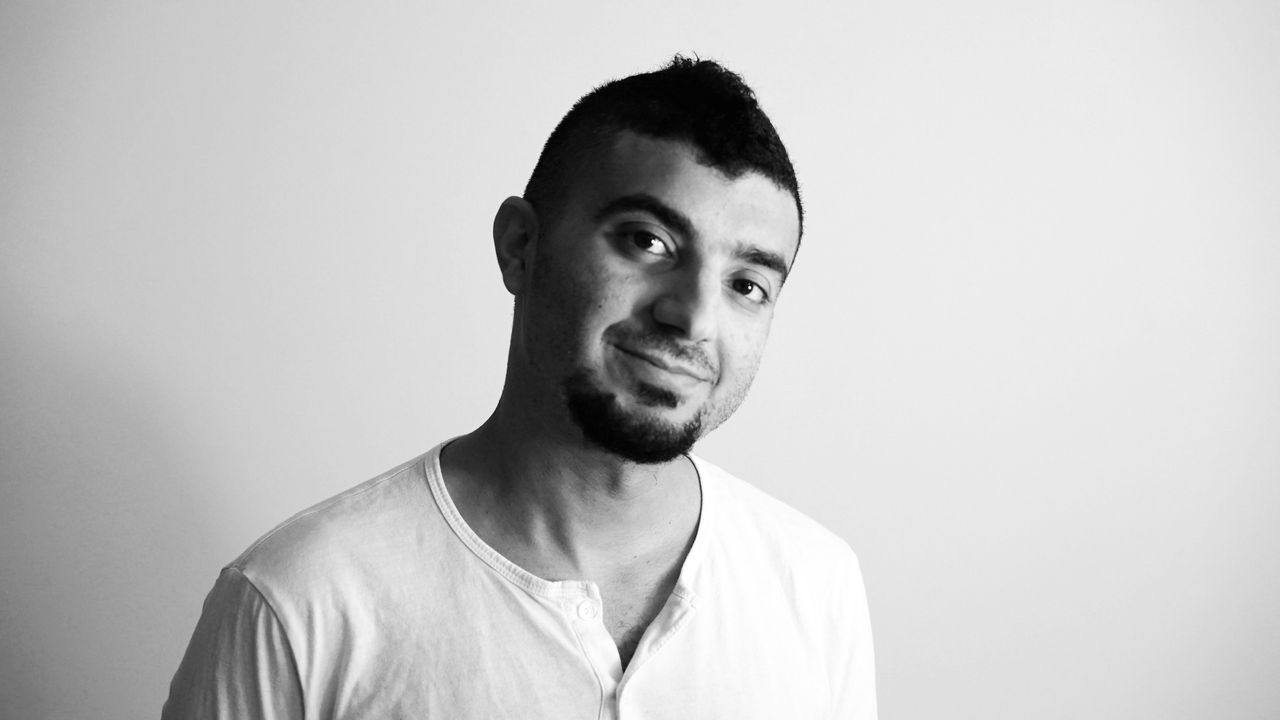Thousands of Egyptians poured into Cairo's Tahrir Square on Jan. 25, 2011, to participate in mass demonstrations against Hosni Mubarak's long regime. The day would come to signify the start of dramatic changes in Egypt’s sociopolitical structure, and it would also spark hope in everyday citizens, young and old, who had become frustrated with the widespread corruption, persistent unemployment and police brutality that were so common under Mubarak.
A young graphic designer and artist who uses the name Ganzeer for his artistic work found himself among those in the heart of the revolutionary moment. He armed himself with the power of art and a newfound sense of purpose.
"It just felt like the most important thing in the world," the artist told The WorldPost.
With his massive murals on the walls of Cairo -- most notably his portraits of people who died in Tahrir Square -- and political posters available online to download and distribute, Ganzeer quickly became a public figure in the movement and acquired a large following.
Ganzeer's often-satirical artwork, which unabashedly criticizes Egypt's leadership and challenges the moral codes of traditional Egyptian society, also gained international attention. The artist saw his work featured in exhibitions around the world and his name splashed on the pages of many media outlets, including The New York Times, The Nation and Vice.
Ganzeer moved to the U.S. in 2014, living first in New York City before relocating to Los Angeles. He won't return to Egypt for now because he's concerned for his safety, but he has continued to stay politically active through his work -- his recent focus on police brutality and the New York City Police Department being a prime example.
"I feel the need to make sure, when I spend time doing something, that it is something that needs to be done," he said.
Ganzeer talked to The WorldPost to reflect on the Arab Spring, Egypt's future and his own journey from a graphic designer to an artist who helped rally people wanting to bring down an autocratic regime.
Let's go back to the beginning of the 2011 protests, when people were first taking to the streets. What was going through your mind?
To be honest, I thought the kids that gathered in public spaces were going to get their asses kicked. That’s as far as my thinking went. I didn’t think it would go any further at all.
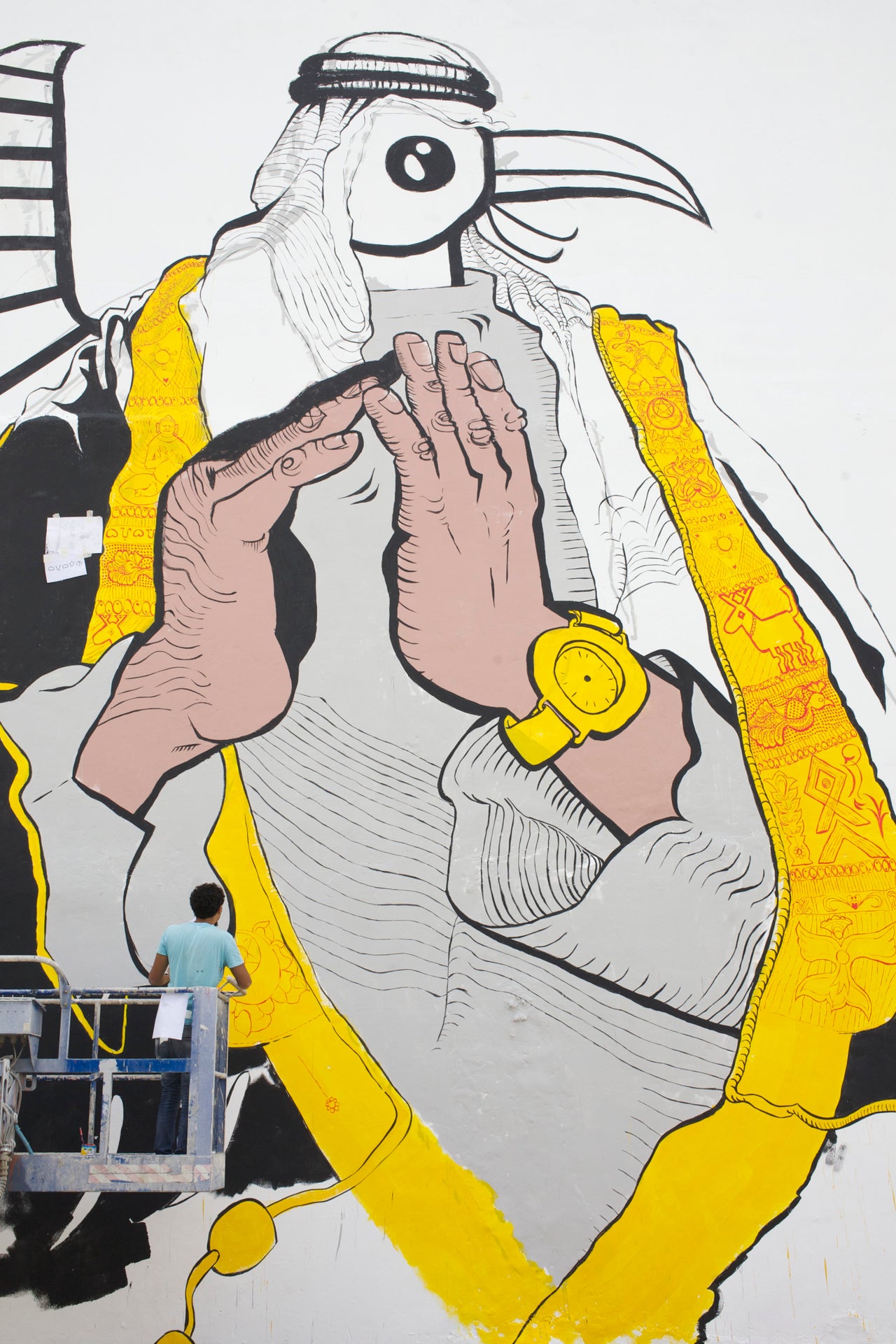
What are your strongest memories of those two weeks?
Jan. 25 is Police Day in Egypt, it still is. It’s a national holiday celebration of the "amazing" efforts of the Egyptian police force. I was off that day, and I was in downtown Cairo over at a friend's place, who also had the day off.
There had been reports earlier that morning, of people tweeting how their friends got arrested and that people got picked up from cafes. It was obvious that the security apparatus was on edge and that something was going to happen.
I started seeing updates from people on Twitter and from friends of mine, some who were showing live video feeds using an app called Bambuser, and I could see the marches from places like Mohandeseen. I had never seen protests that large before. I heard the chants in these videos and I thought, Oh, this is actually going to happen.
So these big protests are happening and I was trying to follow the videos and figure out where the protesters were going. It didn't seem the protesters really knew where they were going at the time, until they decided to march toward the Ministry of the Interior. That was exactly where my friend lived! I was right next door!
I went to see what was going on, and police were lining up everywhere. To get to the Ministry, the protesters had to go through Tahrir Square, and that's where the clashes happened. I so happened to have spray paint with me, and one thing led to another. It was just by accident, nothing was planned really. But that's when I knew this was a revolution. If you asked me an hour before, I would have told you, Oh, no, that’s never going to happen.
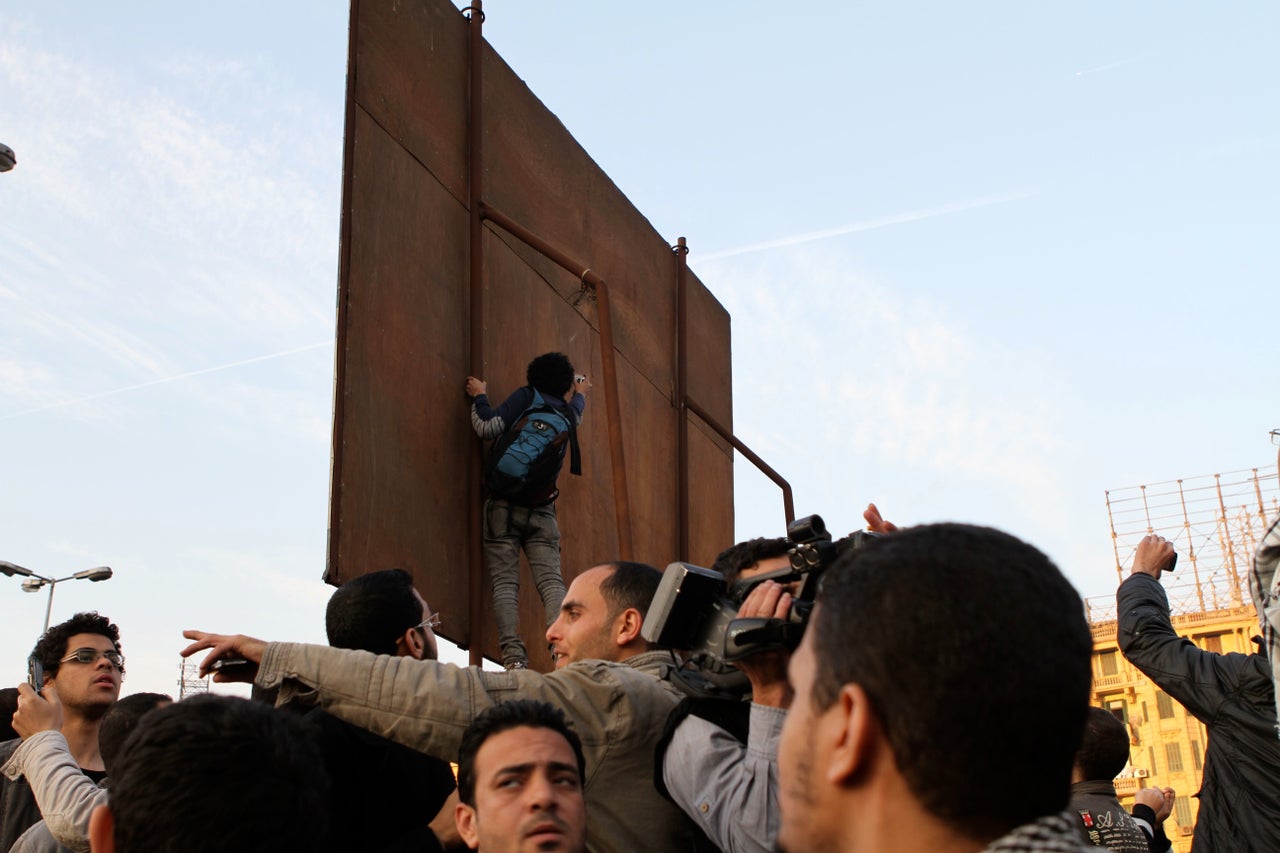
Fast forward a couple of years, when the protests are in full effect. What was the biggest challenge you faced? How did it shape you as an artist?
For me -- and I think this applies to a lot of artists from Cairo in general -- there has always been a need to, through art, do things that are socially engaging, that comment on the human condition that we’re in and to make work that was relevant. So, it just seemed so obvious to some degree.
I was working on a project for a client who was opening a really big furniture store in Ma'adi. I was doing all the branding and the graphics and the interior stuff for the inside of the store. They intended to open the store in February, so I had started working on the project a few months before January and there was a lot of work to be done that month.
Of course when the revolution started to unravel, I just threw all the stuff away and started to engage with the revolution stuff. It just felt like the most important thing in the world. But I would still get calls from this client, who did not realize that this was a revolution. This was just a guy who owned a business and wants his store to open. I don’t think he realized what was going on. He was asking me how the designs are doing for the store and I was just like, "What the fuck are you talking about? Fuck your store. We’re in the middle of a revolution."
It dawned on me: If this store is not important now in this moment of time, then maybe it’s not important ever. So why spend anymore time out of our lives doing this sort of stuff?
The revolution made it so clear, what was important and what wasn’t important. So that was a major thing for me in January. So, yes, I was obsessively doing this revolutionary kind of street art, putting out posters for people to download and print and stuff like that. A big part of it was this fear that this moment would be fleeting. That it would be gone and it wouldn't amount to anything and that we would lose it. So I think all these efforts that we were doing, or I was doing in particular, came from a need to hold onto it, to make sure it would snowball into actual results and not just die off.
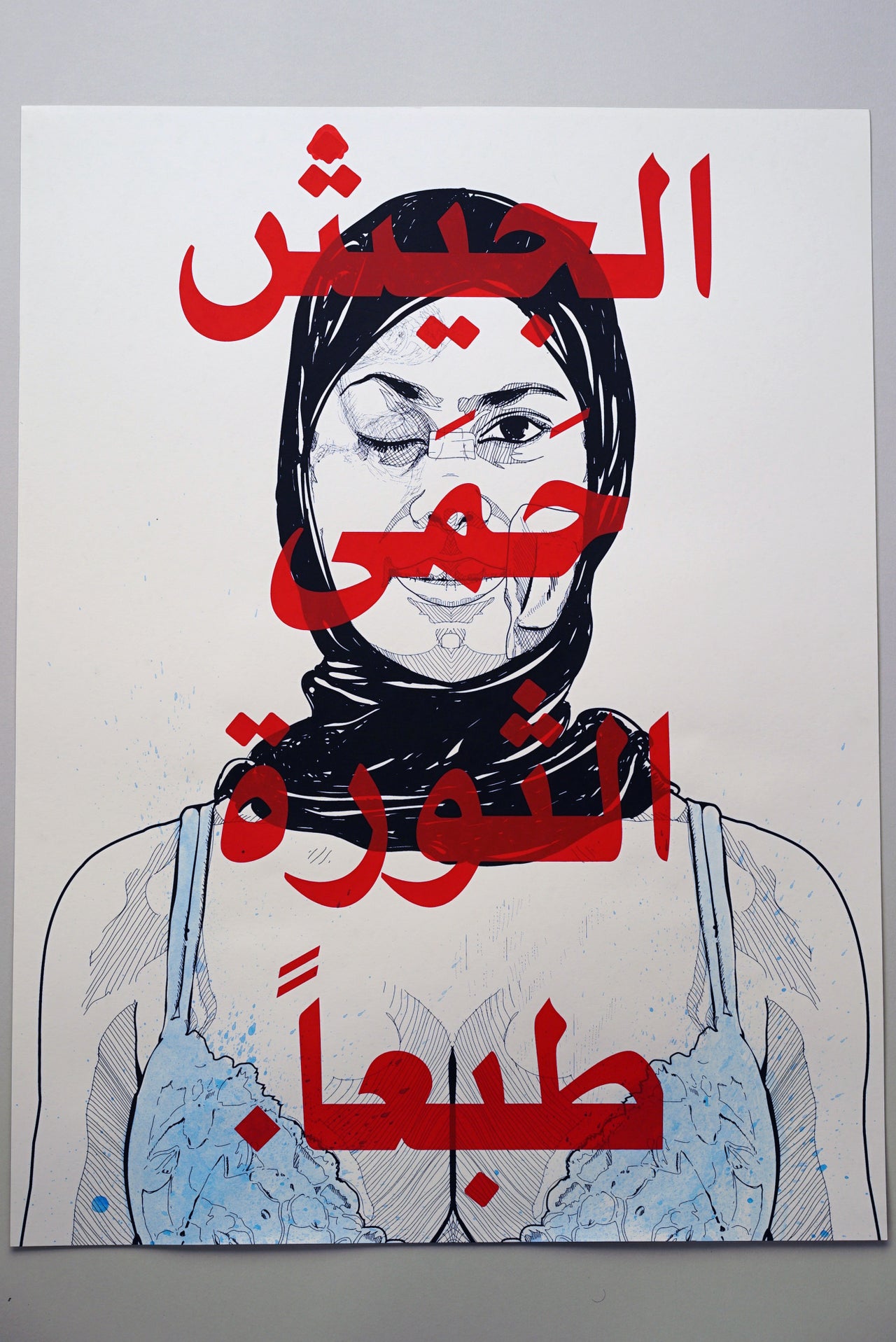
Was fear your biggest challenge as an artist during the revolution?
I guess. It was definitely the most amazing time of my life. It felt like the most important and the most enlightening and the most relevant time. It’s one of those things where you can try to put it into words and you can try to get close to describing it, but you’re not exactly there.
“The revolution made it so clear, what was important and what wasn’t.”
- Ganzeer
During the Egyptian revolution, you distributed stickers and posters as part of "an alternative media campaign." Can you expand on that? Why was there a need for alternative media?
It became very clear that a battle for public opinion was taking place in Egypt. At the end of the day, that's what a revolution kind of is. You have the government on one hand claiming they are the good guys and they are the ones looking out for the interest of the people. Other people say the government is the bad one, that it is ruining people's lives and has to be taken down. Whoever wins the majority of public opinion in this case is the winner.
The alternative media campaign, that's what street art was. The actual media wasn't a doing very good job at being objective in any way. The government had the upper hand of media saturation and most of the media sided with the government agenda. They lied about what people were protesting about. They said the protests were funded by the Iranians or by Israeli spies. Whatever it was, they were trying to tarnish the image of the protesters in any way possible but weren't very clever about it.
So people like myself have to rely on things like discussions or word of mouth or making art. With art in particular, you can create an image that is a more clever way of communicating what you want, and its impact is multiplied because people can take pictures of it and show it to other people. I also feel that strong images can have the power of planting an image in a people’s mind even if they initially disagree with what the image suggests. Perhaps it plants a seed that allows them to ponder it and think about it and maybe it will grow into something else later down the line.
What power do you think art had when the revolution began back in 2011 and now five years later?
You can’t underestimate the effects of a revolution. The effects of the revolution are contradictory in some sense. Some people are interested in making meaningful art; on the other hand, artists have developed a distaste doing anything remotely political. They don’t want to deal with all this bullshit anymore. They're tired.
But I think art in Egypt is far more developed than what you see in the U.S., for example. A lot of new artists emerged during the revolution. New artists made powerful art in different contexts, whether it was street art, visual art, or performative art in the street or showed art in independent galleries and spaces.
“All these efforts that we were doing, or I was doing in particular, came from a need to hold onto it, that it would snowball into actual results and not just die off.”
- Ganzeer
How has the Arab Spring changed you?
I’m definitely more careful to do work that hopefully is relevant in some way. When I spend time doing something, I feel the need to make sure that it is something that needs to be done. The revolution made me. But the timelines and when certain things start to happen is all blurry at this point. I probably would credit the revolution for giving me an outlook that is somewhat revolutionary. I also don’t trust governments anymore. I wonder if I thought that before, or how I thought about governments before the revolution.
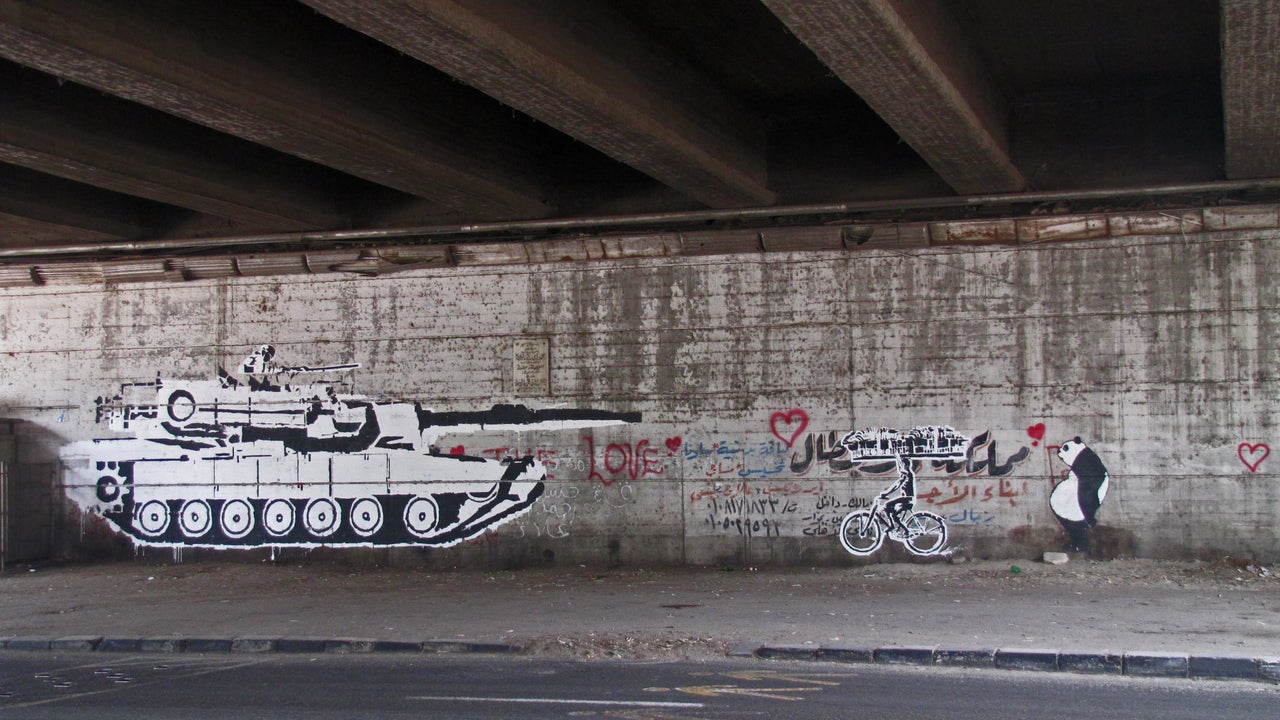
Did the revolution change how you feel about your country?
Yes. Before the revolution, I was very bored with Egypt and very pessimistic about the future of the country. Things didn’t look so good. Things looked like there wasn’t going to be any change.
Do you think it’s better now?
Well, at least now we know things can become much worse or become much better -- or stay the same, for that matter. At least you know it can be different instead of knowing it won’t change whatsoever. That's what was so depressing about it before, this constant numbness. You tried to do things different and it wasn’t working out and you had all these forces against you and it was just the way it is. But now, at least we all know that things can very much be different. Even if to some people, they see it going south. Just the fact that change is possible, it means that change for the better is also possible.
Would you do anything differently, if given those five years again?
I don’t think so. I can’t imagine being anything different actually.
“It was definitely the most amazing time of my life. It felt like the most important and the most enlightening and the most relevant time. It’s one of those things where you can try to put it into words and you can try to get close to describing it but you’re not exactly there.”
- Ganzeer
When you came to the U.S., a lot of people expected for you to do more Egyptian art. Instead you mentioned it's important to make things that are relevant given your new location, which has led you to make art provoking the NYPD and the U.S. government. In the context of you provoking both countries equivalence of a "security force," how did Egyptians and Americans take to your art?
I think it depends on the art. The art I’ve been doing in Egypt is incredibly different from what I’m doing here. I think in both contexts, the stuff I do is a little weird, kind of peculiar. But there are different types of boundaries that are part of the social construct. In the States, people get more offended by overt critiques of the government. People in Egypt get more offended by a context that is sexually suggestive, while that is considered less offensive in the U.S. Both are social constructs that obviously needs to be dismantled.
Living in the U.S. for the past couple of years, what do you miss about Egypt?
The conversations and the crowd, little things like that.
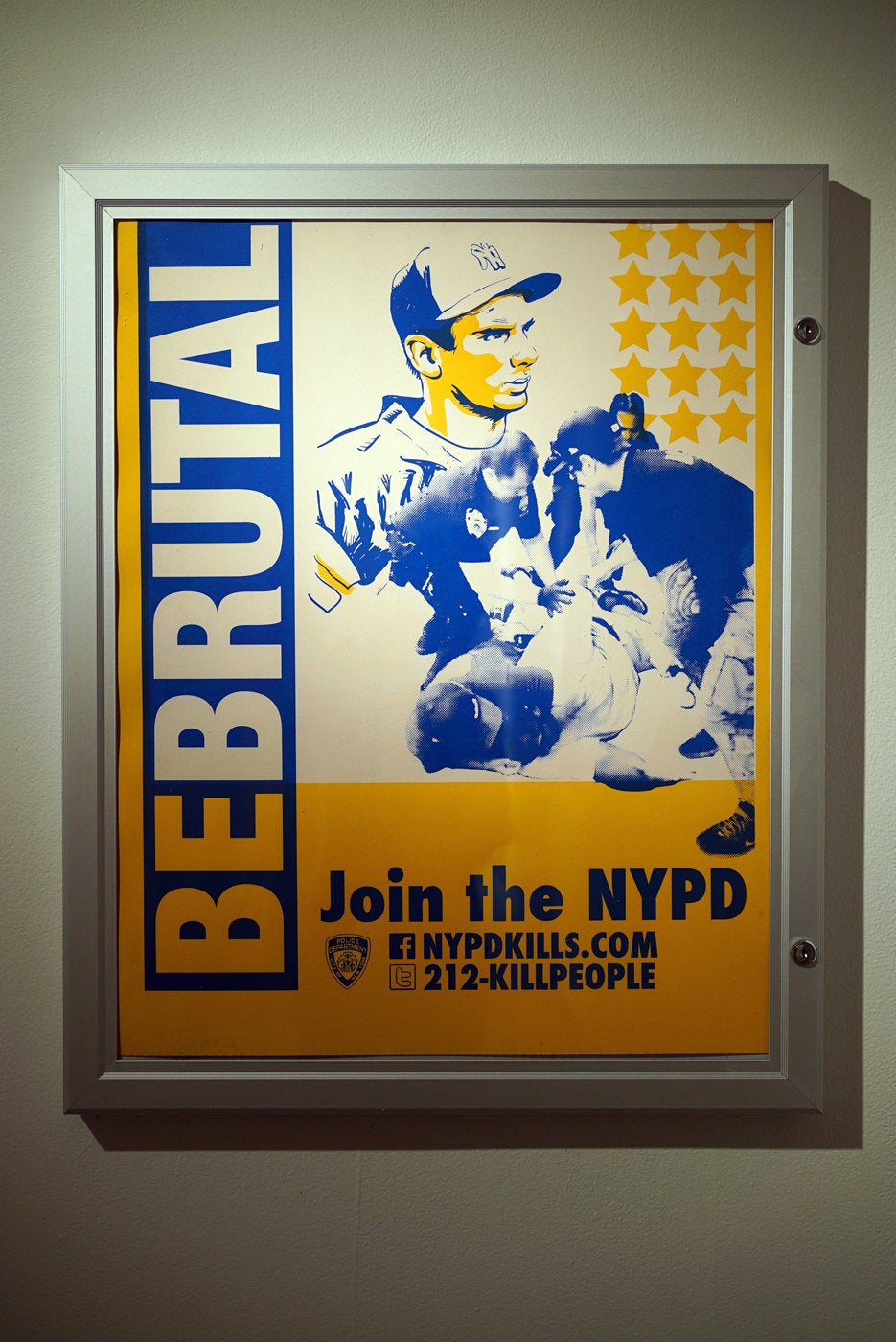
Why did you leave Egypt and what is it like to be a part of your country from afar?
Initially when I left, there was a bunch of things happening at the same time. One, I was talking to some people about setting up an exhibition in NYC during the summer of 2014. But, what actually pushed me to leave was a show on TV hosted by Osama Kamel called "Al-Raes Wel-Nas" ["The President and the People"]. They had put my picture on TV and started to spread rumors about me. It was a private channel that was more sympathetic to the state. So when that happened, on that show, it also appeared on a couple of newspapers and I figured it may be a good idea not to be around for a while. And so that and this exhibition, and I signed up for a collective called Booklyn. I married my fiancé who is now studying in Irvine, and so one thing led to another and I ended up staying.
Do you have plans to return to Egypt?
I don’t have actual plans in place yet, but I will.
This interview has been edited and condensed for clarity.
This post is part of a series looking back at five years after the start of the protests in Cairo’s Tahrir Square. More in the series:
